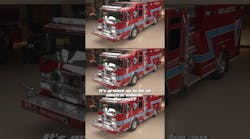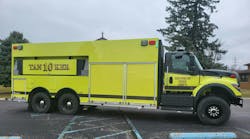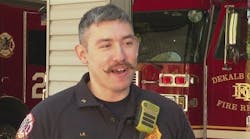Course: Pumps Refresher Course
Session Reference: 2
Topic: Pump Operations and Hydraulic Calculations
Time Required: 3 hours
Materials: Chalkboard
Reference: Pump Operator Student Manual, Maryland Fire and Rescue Institute
Preparation:
Motivation:
Objective (SPO): 2-1
The student will demonstrate a basic understanding of the operation of a centrifugal fire pump to supply water from various sources and involving various operations through class discussion and participation and completion of hydraulic problems to the satisfaction of the instructor.
Overview:
Pump Operations and Hydraulic Calculations
* Pumping Operations
* Hydraulic Problems
Session 2 Pump Operations And Hydraulic Calculations
SPO 2-1 The student will demonstrate a basic understanding of the operation of a centrifugal fire pump to supply water from various sources and involving various operations through class discussion and participation and completion of hydraulic problems to the satisfaction of the instructor.
2 - 1 Demonstrate an understanding of pump operations supplying water from various sources, in various capacities, and in various types of operations.
2 - 2 Demonstrate an understanding of hydraulics through the successful calculation of various hydraulic problems, within an acceptable engine pressure range.
I . Pumping operations (2-1)
A. Water sources
1. Apparatus tank
a. Tank capacities
b. Portable tank operations
c. Tanker shuttle
1 ) Fill station operations
a ) Portable pumps
b ) Volume pumpers
c) Direct vs. through-the pump filling
d ) Appliances
2 ) Dump station operations
a ) Multiple tanks
b ) Portable tank shuttling
c) Side vs. rear dumps
d ) Appliances
2. Pressurized system
a. Capacities - volume and pressure
1 ) Color coding
a ) Light blue - 1500 gpm or greater
b ) Green - 1000 to 1499 gpm
c) Orange - 500 to 999 gpm
d ) Red - less than 500 gpm
2 ) Measuring flow
gpm = 29.7 times d2 times the square root of p
29.7 – constant
d - diameter of the opening
p - pressure of the opening
b. Connections
1 ) Size
2 ) Number
c. Appliances
1 ) Humat
2 ) Hydrant gate or ball valve
3 ) Siamese
4 ) Suction hose
d. Operations
1 ) Hydrant pressure vs. volume
2 ) Estimating hydrant capacity
a ) 10% change indicates that one-third of available water is being used
b ) 25% change indicates that one-half of available water is being used
3 ) Single pumper
4 ) Multiple pumpers
5 ) Multiple lines
3. Static source
a. Components required
1 ) Strainer - barrel or floating
2 ) Hard suction(s)
3 ) Rubber mallet
4 ) Ladder, shovel, or bucket
b. Lift impact - lifts exceeding 10 feet will affect pump capacity
c. Access
d. Single vs. multiple supply pumpers
B. Utilization of apparatus
1. Attack pumper
a. Flow requirements
b. Number and size of attack lines
c. Master streams
2. Supply pumper
a. Flow requirements
b. Number and size of supply lines
c. Distance between source and scene
d. Pumper capacities
e. Water sources
1 ) Tanks
2 ) Pressurized sources
3 ) Static sources
C. Type of operation
1. Handlines
a. Single lines
b. Multiple lines of same size
c. Multiple lines of different sizes
2. Master streams
a. Ground
1 ) number of lines
2) flow requirements
b. Elevated
1) number of lines
2) flow requirements
3) proximity of pumper to aerial device
3. Built-in fire protection systems – 150 PSI to connection
II. Hydraulic Problems (I have diagrams of each problem)
A. Problem #1
700' of 5" hose from supply pumper to attack pumper; 150' of dual 3" lines from attack pumper to siamese; 100' of 3" hose from siamese to ladder pipe assembly; aerial ladder 48' up with 1-3/8" tip
NEEDED: EP for supply pumper and attack pumper
B. Problem #2
1200' of dual 3" lines from supply pumper to relay pumper which is 36' above supply pumper; 800' of 4" hose from relay pumper to attack pumper which is 24' below relay pumper; 100' of 3" hose from attack pumper to thief; two 100' 1-1/2" lines with fog nozzles flowing 100 GPM each off thief; one 300' 2-1/2" line with fog nozzle flowing 200 GPM off thief
NEEDED: EP for supply pumper, relay pumper, and attack pumper
C. Problem #3
700' of 4" hose from supply pumper to attack pumper; two 150' 1-3/4" lines with fog nozzles flowing 100 GPM each
NEEDED: EP for supply pumper and attack pumper
D. Problem #4
800' of dual 3" lines from supply pumper to attack pumper; 250' dual 3" lines from attack pumper to deck gun with 1-3/8" tip
NEEDED: EP for supply pumper and attack pumper
Review:
Pump Operations and Hydraulic Calculations
* Pumping Operations
* Hydraulic Problems






